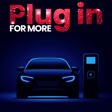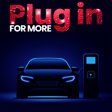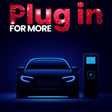
Tesla Model 3 Highland - Tesla Supercharging
Welcome to the Plug In For More podcast! Mike, Tom, and Bryant are here to help you on your journey to an Electric vehicle future. Each episode we discuss current events, trends, and a specific topic of education related to EV's. We bring together a diverse experience set, and pair it with guests who are experts in the field. For even more information on EV's, check out www.EVUniverse.com.
In this episode, the guys talk about the release of the Tesla Model 3 revamp, code-named Project Highland. Also, we sit down with Edwin Xiao, an electrical engineer, owner of Electric Brain Lab, and a former Senior Project Developer for the Tesla Supercharging network. You can learn more about Edwin, and the Electric Brain lab on Instagram @electricbrainlab or his email; Edwin@electricbrainlab.com.
Be sure to follow PIFM on our various social media platforms, for more exciting content on EV’s
Instagram: https://www.instagram.com/pifm_podcast/
Facebook: https://www.facebook.com/PIFMPodcast
YouTube: https://www.youtube.com/channel/UCqXpv3fnOcv-robjLbDINFQ/featured


